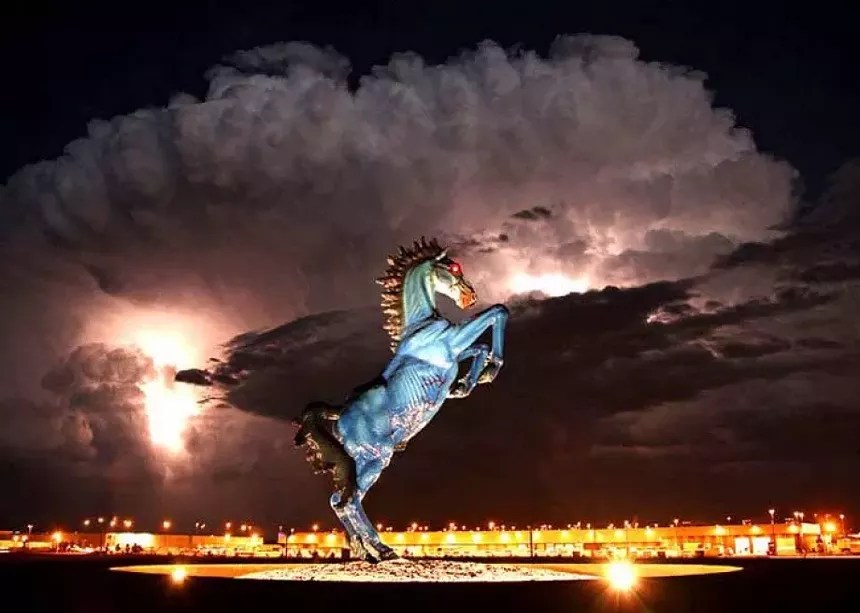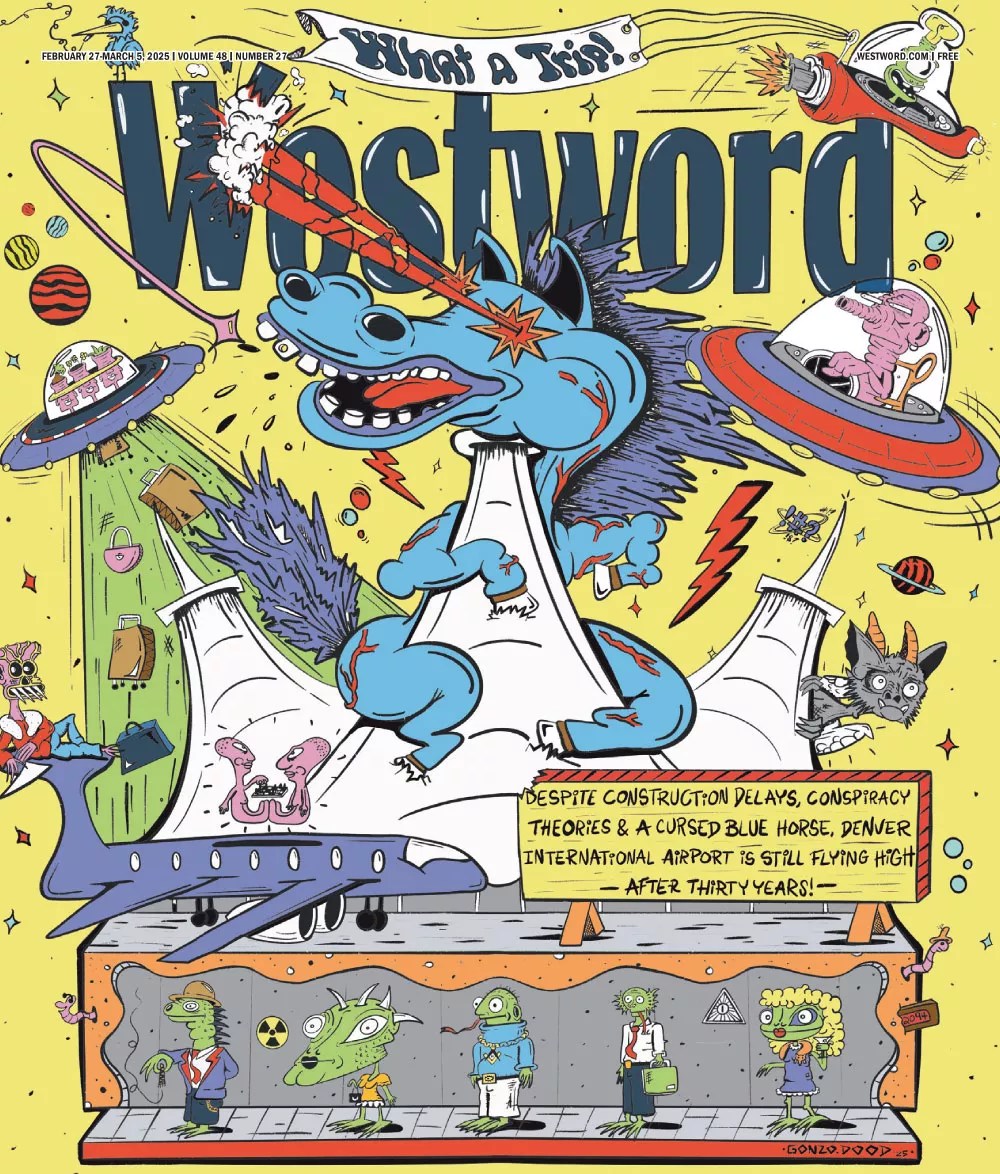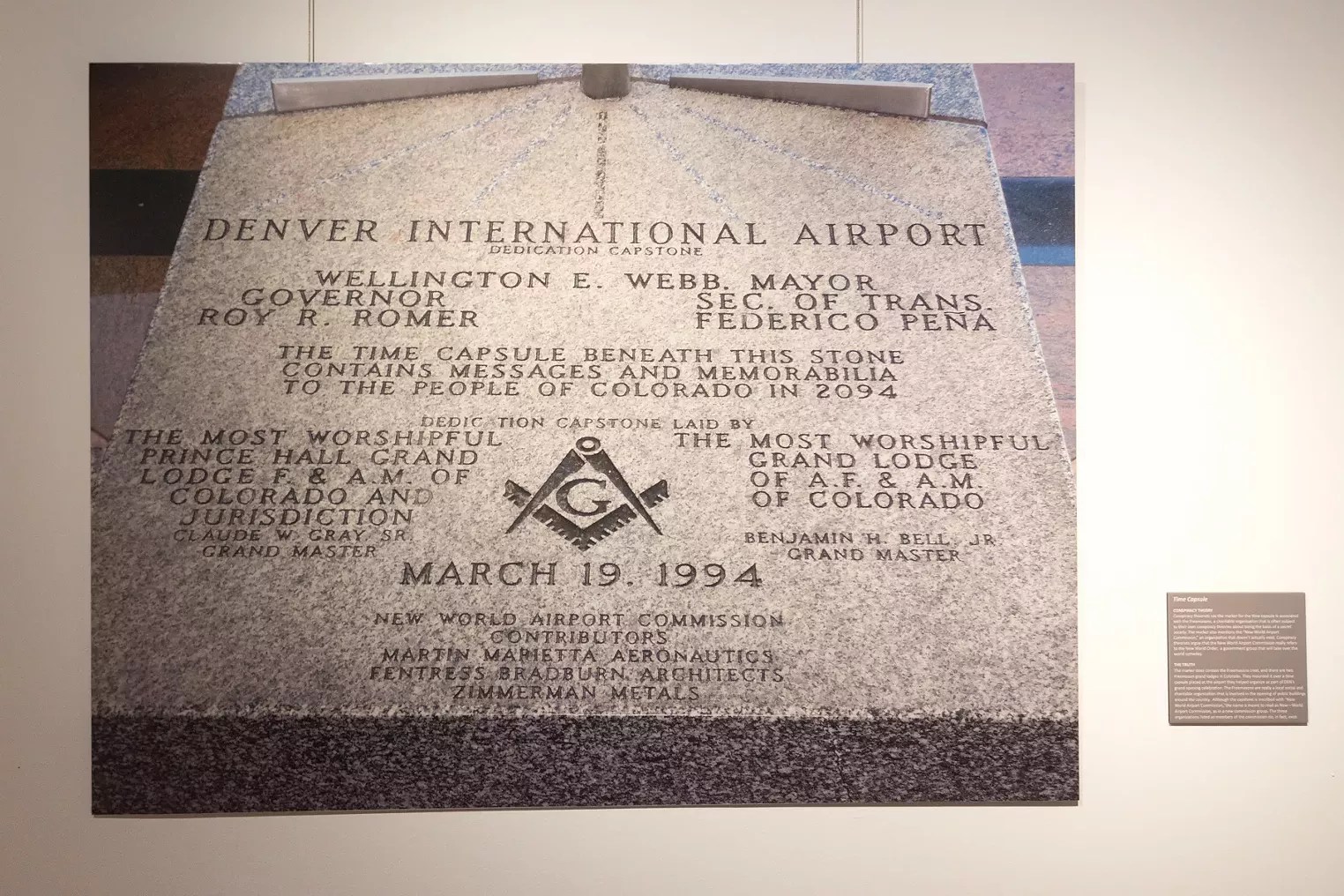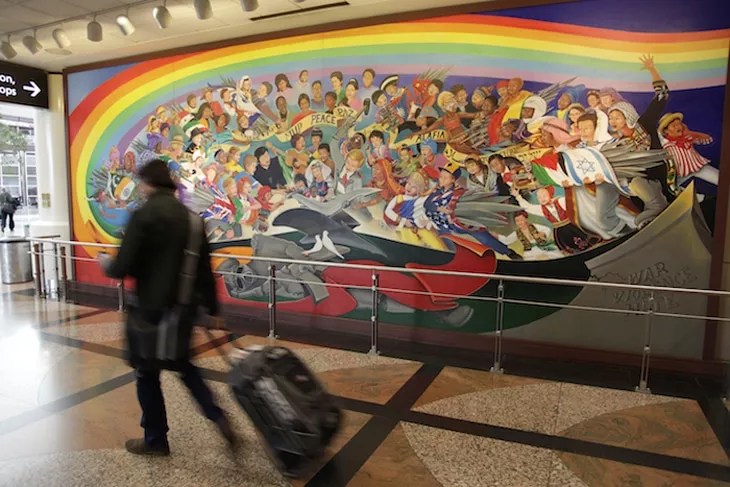
flydenver.com

Audio By Carbonatix
Even before Denver International Airport finally opened on February 28, 1995, conspiracy theories had taken off – propelled by early online crackpots and internet nuts. No matter how hard the airport tried to quell the rumors, they just kept circling. Government secrecy, creeping environmental catastrophe, Martians – there was a myth for everyone. And thirty years later, rumors are still flying.
In June 2007, George Noory, then the host of Coast to Coast, a nationally syndicated talk-radio program dedicated to the “paranormal, extraterrestrial and other topics typically overlooked by more mainstream media outlets,” devoted all four hours to a discussion of DIA. “Have you ever been through the Denver airport? It’s strange. It’s one of the busiest, but I’m telling you, it’s weird,” he pronounced. “There’s a firestorm of people talking about this thing.”
And they kept talking about the Denver airport…in books, in movies, on TV shows and online. Always online, where the conspiracies kept growing. Today, DIA is the country’s third busiest airport…and definitely tops for rumors.
Of mayors and Martians
Denver, make your New Year’s Resolution Count!
We’re $17,500 away from our End-of-Year campaign goal, with just a five days left! We’re ready to deliver — but we need the resources to do it right. If Westword matters to you, please contribute today to help us expand our current events coverage when it’s needed most.
Asked about the conspiracy theories a dozen years after the airport opened, former Mayor Federico Peña, who oversaw the creation of the airport and then became Bill Clinton’s Transportation Secretary, told Westword that they “have no basis in fact,” but then added, “if it were a boring architectural structure, if it were a minor cog in the complex system of aviation traffic around the world, it probably wouldn’t get very much attention from anybody. So in a way, I would think of this as a somewhat interesting observation that people make of DIA, which means that people give it a lot of importance, which it deserves. So I think it’s good in that sense.”
Asked about the conspiracy theories regarding what is today the country’s third busiest airport, current Mayor Mike Johnston says the most memorable is about the horse sculpture that actually did kill its creator: the evil Blucifer.
Deciding that if you can’t beat them, join them, the airport ultimately decided to embrace the crackpot ideas, naming October 2016 “Conspiracy Month” and hosting an exhibit celebrating the craziest theories. The airport subsequently commissioned a marketing campaign blaming the unending construction projects on aliens and other out-of-this-world obstacles.
Before those projects are finished – airport CEO Phil Washington estimates that the Great Hall’s renovation will be complete in 2027- there are bound to be even more rumors. After all, the airport even included a 3-D alien sticker in its birthday package for the media.

Happy anniversary, Denver International Airport!
Bradley Hansen
The top ten conspiracy theories…for now
1. The capstone on a time capsule installed in the Great Hall, dedicated on March 19, 1994, cites the “New World Airport Commission” – which hosted opening celebrations for the airport before the place was anywhere close to opening. In reality, conspiracy kooks point out, that proves that the New World Order built the airport as a command center in its quest to establish a single, all-powerful global government. The Freemasons and Illuminati are in on it, too. “Denver is scheduled to be the Western headquarters of the US New World Order during martial law takeover,” David Icke wrote in his 1999 book, The Biggest Secret.
2. There are tunnels running under Denver International Airport – as well as bunkers five to seven levels deep – created by a shadowy cabal of global elites with plans for brutal incarceration or genocide of undesirables and other deplorables. (Don’t tell Donald Trump, who might use them as a replacement for Buckley Air Space Base for stashing immigrants.)
3. There are tunnels running under Denver International Airport occupied by Martians, who are using them as a base to conquer the solar system.
4. There are tunnels running under Denver International Airport that are full of missing children overseen by reptilian lizard people, who work them as slaves, according to Ickes. Our cold-blooded underlords are said to eat some of the unlucky ones.
5. There are underground tunnels running to North American Aerospace Defense Command (NORAD), as well as an underground bunker at Denver International Airport where then-President Barack Obama was supposed to hide out during his 2011 visit to Denver if Comet Elenin hit the earth – or when he wanted to conduct a Defcon 1 “Cocked Pistol” maximum-readiness alert. We forget which.

There are clues in the time capsule capstone.
Ken Hamblin III
6. The geographic coordinates the aliens gave humans for a meet-up in Steven Spielberg’s Encounters of the Third Kind – 40-36-10N, 104-44-30W) take you right to the future home of Denver International Airport. Close enough: the coordinates actually would land you about fifty miles northwest.
7. The airport is a haven for people with occult knowledge who honor Satan and anticipate the apocalypse, as exemplified by Blucifer and the two murals by Leo Tanguma, “In Peace and Harmony With Nature” and “The Children of the World Dream of Peace.” According to the DIA website, the murals function metaphorically as diptychs (hinged tablets of theological artwork and writing often placed on Catholic altars) designed with two simple themes: environmental destruction vs. environmental healing and war vs. peace. According to conspiracy theorists, they are prophetic warnings from celestial beings that humans must clean up their act or face mass extinction. Or they show that evil forces are about to overthrow the world, so why bother cleaning up anything?

“The Children of the World Dream of Peace,” by Leo Tanguma, is currently in storage.
flydenver.com
8. The airport runways are shaped like a swastika (or a cobra or a penis).
9. The airport killed JonBenét Ramsey. Hey, don’t look at us; look at konformist.com/jonbenet.htm for the evidence.”So, the question must be asked: is JonBenét Ramsey’s death, far from being a pointlessly tawdry tale, one of the most significant events in the history of mankind?” asks the must-be-asked question. “Is it part of some nefarious plot, the work of occult-worshipping Freemasons, joining forces with the British Monarchy, Nazis and the CIA, hell-bent on leading us to a destructive New World Order? Is it even possible that the Ramseys are actually patsies, framed in many people’s minds for a crime they didn’t commit? Can it be that the hi-tech silent midgets with no footprints I openly mocked before are, in fact, evil Alien Greys, and that JonBenét’s death is an alien abduction gone haywire?”
10. In early promotional material, DIA was billed as an “all-weather airport,” but that claim didn’t last long. Soon, an airport spokesman admitted “there’s no such thing as an all-weather airport. It’s like the phrase ‘all-terrain vehicle.’ It says ‘all-terrain,’ but you can’t drive one off a cliff and survive.”
What’s your favorite conspiracy theory about Denver International Airport? Send it to editorial@westword.com.